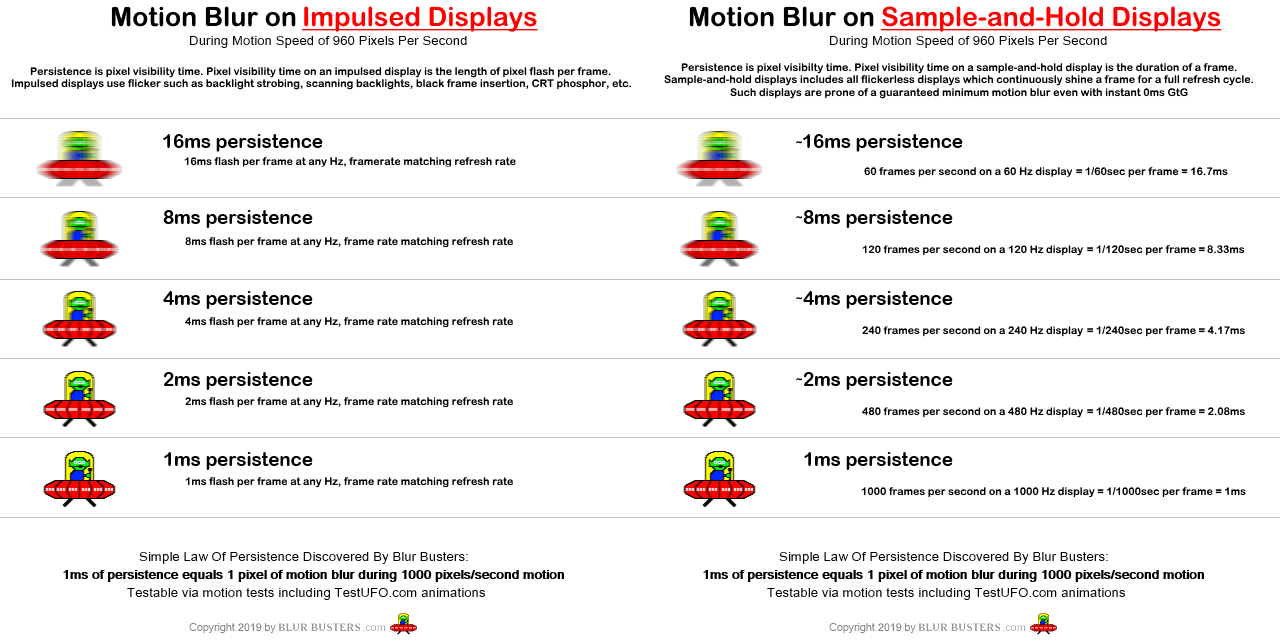You can even combine the two (e.g. framegen 60fps->120fps, and then strobe the 120fps to 1/240sec blur).
1. Framerate-Based Motion Blur Reduction
Examples: More GPU, or framegen, LSS, extrapolation, interpolation, reprojection, spacewarping
- MPRT motion blur is frametime.
- Needs higher Hz
- Double framerate = half motion blur.
- Works fantastically on OLED. (Gold standard is 480Hz+)
- No flicker, full brightness, HDR
- More common to have VRR
- May need help of massive framegen (preferably 4x framerate such as LSS or DLSS 3.5+)
- Can be superior for modern content if you can maintain frame rate
- Future will be 10x framegen for 90% motion blur reduction
2. Strobe-Based Motion Blur Reduction
Examples: Black frame insertion (BFI), strobe backlight modes (ULMB, DyAc, ELMB, PureXP, LightBoost), or phosphor impulsing (CRT, plasma)
- MPRT Motion blur is pulsewidth time.
- Does not need higher Hz to reduce blur (just improves smoothness/flicker/stroboscopics)
- Requires flicker/impulsing but reduces massive amounts of motion blur
- Looks best at framerate=refreshrate=stroberate
- Can darken images
- Some models are inflexible (won't let you blur-reduce certain refresh rates, unless Blur Busters Approved)
- Less common with VRR
- Can be superior for retro content or when you can't maintain frame rate
Comparison Diagram


